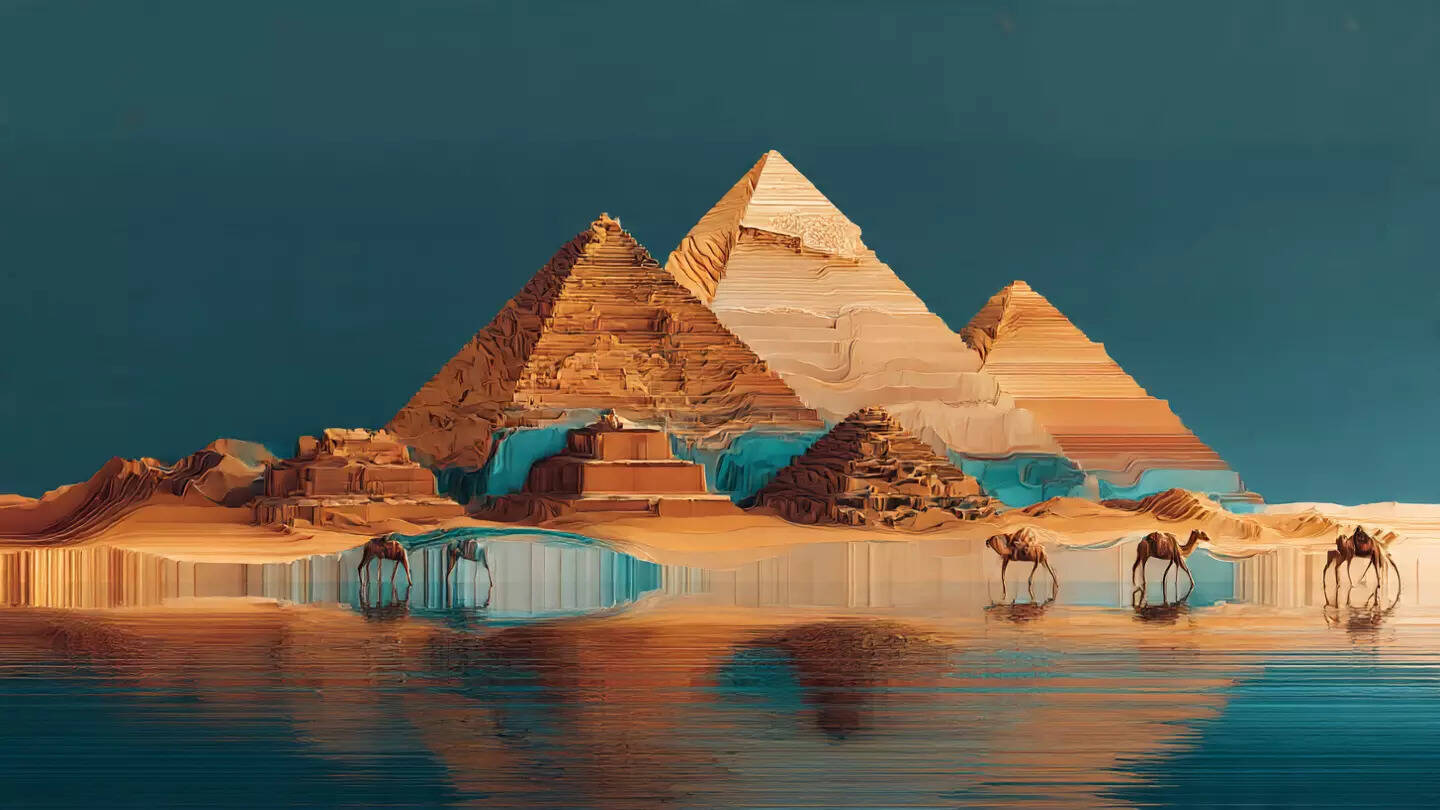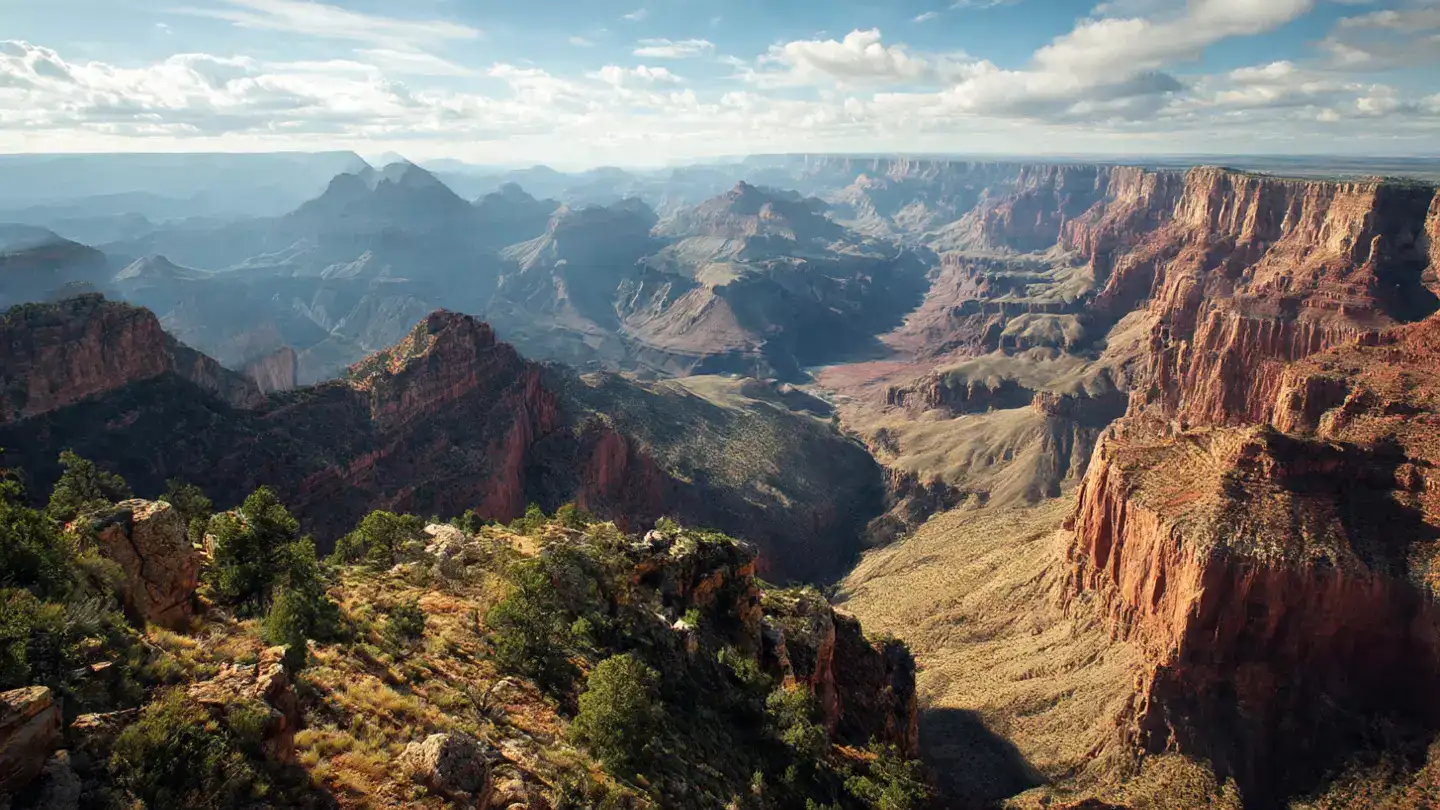7 Objects On Earth Astronauts Can Spot From Space
Our planet is home to countless natural and man-made marvels, but only a few are so immense or uniquely designed that they can be spotted from orbit. From towering mountains to monumental human creations, these landmarks highlight both Earth’s breathtaking landscapes and the ingenuity of human civilization. Observing these sites from space provides a perspective unlike any other, blending history, engineering, and nature in a single view.
While ancient monuments like the Pyramids of Giza reflect centuries of human achievement, modern marvels such as Palm Jumeirah showcase contemporary urban engineering. Natural formations like Mount Everest and the Grand Canyon demonstrate the immense power and scale of our planet.
Here’s a closer look at 7 objects on Earth visible from space:
Top Landmarks in Detail
Mount Everest

Rising 8,848 meters above sea level, Mount Everest is the world’s highest peak. Its snow-capped summit is easily distinguished from nearby mountains, making it visible from orbit. Everest represents both natural beauty and the ultimate challenge for mountaineers.
Palm Jumeirah

Completed in 2006, this artificial island off Dubai’s coast is shaped like a gigantic palm tree. Home to luxury hotels, residences, and leisure spots, its unique design and crescent shape make it one of the most recognisable man-made structures from space.
Great Wall of China

Stretching over 21,000 km through mountains, deserts, and plains, the Great Wall is the longest man-made structure on Earth. Built to protect ancient kingdoms, it exemplifies human ingenuity and historical perseverance.
Great Barrier Reef

Spanning thousands of kilometres, this coral reef system is the largest in the world. Its vibrant colours and sheer size make it highly visible in satellite imagery, showcasing the ocean’s natural splendour.
Grand Canyon

Formed by the Colorado River over millions of years, the Grand Canyon’s 446 km length and deep ravines reveal stunning geological formations. Clear skies and sunlight enhance its visibility from space.
Nazca Lines

Located in Peru’s desert, these enormous geoglyphs depict animals and humans. Their large-scale designs are best appreciated from above, highlighting ancient creativity.
Pyramids of Giza

Built over 4,500 years ago, the pyramids served as tombs for pharaohs. Millions of limestone blocks and precise geometry make them stand out against Egypt’s desert landscape, visible even from orbit.
Earth’s most remarkable landmarks, whether natural or man-made, offer awe-inspiring sights from space. Ancient monuments like the Pyramids of Giza and Nazca Lines highlight human history, while modern marvels like Palm Jumeirah reflect contemporary engineering. Natural wonders like Mount Everest and the Grand Canyon reveal the planet’s breathtaking scale and beauty. From orbit, these sites collectively tell the story of both human achievement and the magnificence of our planet.

While ancient monuments like the Pyramids of Giza reflect centuries of human achievement, modern marvels such as Palm Jumeirah showcase contemporary urban engineering. Natural formations like Mount Everest and the Grand Canyon demonstrate the immense power and scale of our planet.
Here’s a closer look at 7 objects on Earth visible from space:
| Rank | Landmark | Location | Why It’s Visible from Space |
| 1 | Great Wall of China | China | The longest man-made structure on Earth, spanning over 21,000 km. Its immense length and unique winding path make it visible from low Earth orbit under optimal conditions. |
| 2 | Pyramids of Giza | Egypt | Iconic ancient stone structures with precise geometric shapes. Sunlight reflecting off their surfaces enhances visibility from orbit. |
| 3 | Palm Jumeirah | Dubai, UAE | A man-made island shaped like a palm tree, with a distinct design easily distinguishable from space. |
| 4 | Mount Everest | Nepal/China border | The tallest mountain on Earth, with snow-covered peaks creating a stark contrast with surrounding terrain, visible even from high altitudes. |
| 5 | Grand Canyon | USA | Massive natural canyon with intricate ravines and striking color patterns, visible during clear weather conditions from orbit. |
| 6 | Nazca Lines | Peru | Huge desert geoglyphs depicting animals and human figures. Their vast scale and contrasting desert soil make them observable from above. |
| 7 | Great Barrier Reef | Australia | The world’s largest coral reef system. Its vibrant colours and immense size stand out in satellite images and from orbit. |
Top Landmarks in Detail
Mount Everest

Rising 8,848 meters above sea level, Mount Everest is the world’s highest peak. Its snow-capped summit is easily distinguished from nearby mountains, making it visible from orbit. Everest represents both natural beauty and the ultimate challenge for mountaineers.
Palm Jumeirah

Completed in 2006, this artificial island off Dubai’s coast is shaped like a gigantic palm tree. Home to luxury hotels, residences, and leisure spots, its unique design and crescent shape make it one of the most recognisable man-made structures from space.
Great Wall of China

Stretching over 21,000 km through mountains, deserts, and plains, the Great Wall is the longest man-made structure on Earth. Built to protect ancient kingdoms, it exemplifies human ingenuity and historical perseverance.
Great Barrier Reef
You may also like
- Losing sleep over snoring? Naturopathy doctor recommends simple 60-second tongue exercise that could let you sleep in peace
- Bihar polls: "BJP only party that can provide good governance," says Mithun Chakraborty
- Hospital shares health update of Katrina Kaif and her newborn baby boy
- Swiggy's Board Approves INR 10,000 Cr Fundraise
- Jackie Shroff blasts photographers for creating chaos outside Zayed Khan's house post his mother's demise

Spanning thousands of kilometres, this coral reef system is the largest in the world. Its vibrant colours and sheer size make it highly visible in satellite imagery, showcasing the ocean’s natural splendour.
Grand Canyon

Formed by the Colorado River over millions of years, the Grand Canyon’s 446 km length and deep ravines reveal stunning geological formations. Clear skies and sunlight enhance its visibility from space.
Nazca Lines

Located in Peru’s desert, these enormous geoglyphs depict animals and humans. Their large-scale designs are best appreciated from above, highlighting ancient creativity.
Pyramids of Giza

Built over 4,500 years ago, the pyramids served as tombs for pharaohs. Millions of limestone blocks and precise geometry make them stand out against Egypt’s desert landscape, visible even from orbit.
Earth’s most remarkable landmarks, whether natural or man-made, offer awe-inspiring sights from space. Ancient monuments like the Pyramids of Giza and Nazca Lines highlight human history, while modern marvels like Palm Jumeirah reflect contemporary engineering. Natural wonders like Mount Everest and the Grand Canyon reveal the planet’s breathtaking scale and beauty. From orbit, these sites collectively tell the story of both human achievement and the magnificence of our planet.









